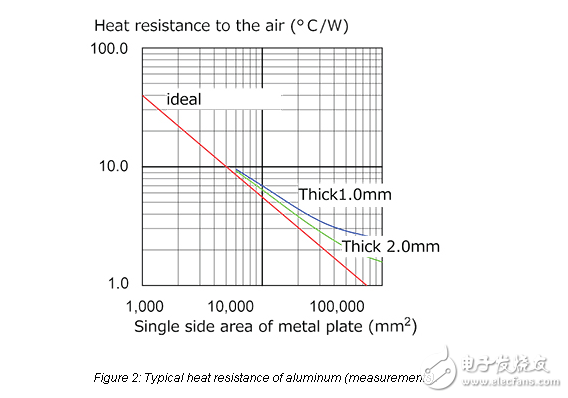
资料下载

×
功率电阻器的传热和散热器的使用
消耗积分:0 |
格式:rar |
大小:0.60 MB |
2017-05-11
功率电阻器的传热和散热器的使用
功率电阻器产生的热能传递
本文论述了在功率电阻传热的实际问题,包括薄膜电阻器部分的具体几何形状的描述,而不是其他技术,如绕线电阻。当电流被施加到功率膜电阻器(简称为“电源电阻”在这篇文章),电阻元件产生的热量,必须消散,以便温度的电阻元件不超过其指定的最高工作温度。现代薄膜电源电阻通常被纳入各种各样的标准“到”包,它具有体积小,方便安装在标准的印刷电路板布局。然而,这些标准封装的小尺寸将不支持这些设备的额定功率没有额外的帮助转移热量远离电阻元件。这种帮助通常来自附加包到一个更大的热“散热器”,这是在与金属底板或法兰底部的包。散热器的目的是从小电阻元件中汲取热量(从而使元件的温度保持在其最大工作温度以下),然后通过传导和对流在散热片的大面积上散热。

Simple metal heat sinks
A simple, practical heat sink is an aluminum or steel plate as shown in Figure 1. When a resistor is attached directly to the heat sink, the heat generated by the resistor conducts to the metal plate, and then into the air as a result of convection. The cooling ability of the metal plate depends to a certain extent on whether the metal plate is oriented vertically or horizontally because of natural convective air cooling. Further heat transfer improvements can be obtained by forcing air over the heat sink in a process known as “forced-air cooling”。
The heat transfer characteristics of heat sinks are determined experimentally and heat transfer values for aluminum and steel plates are well known. The cooling capacity of metal plate heat sinks in air are generally represented as “thermal resistance” (see next section), expressed as °C/W, of a metal-plate heat sink as shown in Figure 2. Figure 3 shows the thermal resistance of a more efficient heat sink incorporating fins.
声明:本文内容及配图由入驻作者撰写或者入驻合作网站授权转载。文章观点仅代表作者本人,不代表电子发烧友网立场。文章及其配图仅供工程师学习之用,如有内容侵权或者其他违规问题,请联系本站处理。 举报投诉
评论(0)
发评论
- 相关下载
- 相关文章







